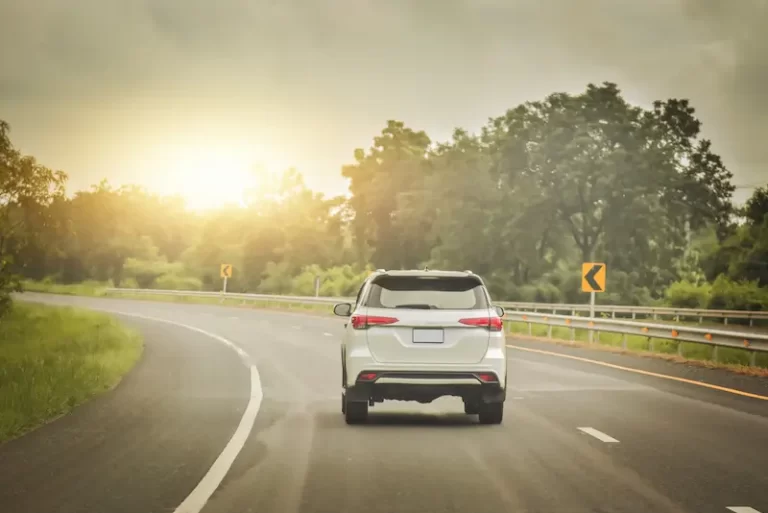Your check engine light’s off, but your car’s saying “not ready” for emissions testing. Frustrating, right? You don’t have to spend hours driving loops around town. There’s a smarter way to complete your drive cycle and get those monitors set without leaving your driveway. Here’s everything you need to know.
What’s a Drive Cycle Anyway?
A drive cycle is your car’s self-test routine. When you clear codes or disconnect your battery, your vehicle’s computer (the PCM) resets all its emissions monitoring systems. These monitors need to complete before you can pass inspection.
Think of it like a health checkup for your car. The computer runs tests on the catalyst, oxygen sensors, and evaporative system. But here’s the catch—it won’t run these tests unless specific conditions are met.
Why Traditional Driving Doesn’t Always Work
Most folks assume they just need to drive around for a while. That’s partly true, but it’s not that simple.
Your PCM is picky. It wants:
- Specific temperature ranges
- Certain speeds held for exact timeframes
- Precise acceleration and deceleration patterns
- Multiple cold starts (engine off for 8+ hours)
City traffic? That’s usually not enough. Highway-only driving? Still missing key conditions. You’d need perfect timing and conditions that rarely align.
The Stationary Solution: How It Works
Here’s where things get interesting. You can trick your car’s computer into thinking it’s driving—while parked in your garage.
The secret lies in understanding what the PCM actually monitors. It doesn’t measure wheel rotation for most tests. It tracks engine temperature, load changes, and exhaust gas patterns. You can simulate these without moving an inch.
What You’ll Need
Basic setup:
- An OBD2 scanner (not just a code reader)
- 8 hours of cold soak time
- Fuel tank between 15% and 85% full
- A fully charged battery
Professional setup:
- Bi-directional scan tool
- Service bay test software
- Or access to a chassis dynamometer
The Step-by-Step Stationary Method
Preparation Phase
Start with a cold engine. Not “hasn’t run in an hour” cold—we’re talking overnight cold. Your intake air temperature and coolant temperature need to match ambient air within 11°F.
Check your fuel level using your scanner, not your gauge. Dashboard gauges use anti-slosh buffering that doesn’t reflect what the PCM sees. You need the raw fuel level input between 15% and 85%.
Verify zero diagnostic trouble codes. Even a pending code can block monitor completion.
The Warm-Up Sequence
Fire up your engine and let it idle for 2-3 minutes in Park or Neutral. Don’t touch the gas pedal yet.
During this window, turn on every electrical load you’ve got:
- Air conditioning at full blast
- Headlights on high beam
- Rear defroster
- Heated seats if you’ve got them
Why? You’re forcing the PCM to adjust fuel delivery and ignition timing. This activates the comprehensive component monitor and speeds up the oxygen sensor heater test.
The High-Idle Protocol
Once your temperature gauge hits normal (usually 15-20 minutes), shift to neutral and apply parking brake.
Here’s the critical sequence:
- Rev to 2,000-2,500 RPM and hold it steady for 3 minutes
- Let it drop back to idle for 30 seconds
- Rev to 4,000 RPM and hold for 15 seconds
- Return to idle for 2 minutes
- Repeat this cycle 2-3 times
This simulates highway driving conditions. You’re heating the catalytic converter to operating temperature and generating the exhaust velocity needed for oxygen sensor tests.
Monitor-Specific Tricks
For the catalyst monitor:
The catalyst test is the trickiest. It needs sustained high temperatures and specific gas velocities. Some vehicles (looking at you, Toyota) need a “Pattern 2” sequence that’s nearly impossible to complete stationary without professional tools.
For EVAP systems:
The evaporative emissions test usually requires a natural cool-down after driving. But professional scan tools can force this test in 8-15 minutes using a service bay test protocol.
For oxygen sensors:
These typically complete during the high-idle phase. The PCM compares the upstream sensor’s rapid switching to the downstream sensor’s steady signal.
Professional Tools That Change the Game
Service Bay Tests
If you’ve got access to a bi-directional scanner, you’re in luck. Tools like Snap-on Zeus, Autel MaxiSys, or manufacturer-specific software (Ford IDS, GM GDS2, Toyota Techstream) can command the PCM to run tests on demand.
This bypasses traditional drive cycle requirements completely. The software tells your car’s computer: “Run the EVAP test now.” And it does.
For GM’s EVAP system, technicians can heat the fuel tank by running high idle for 10 minutes, then let the system monitor natural vacuum for 45 minutes—all while stationary.
Chassis Dynamometers
When software won’t cut it, there’s the dyno. A chassis dynamometer lets your wheels spin while the vehicle stays put. It simulates road load, aerodynamic drag, and vehicle weight.
This is the gold standard for completing difficult monitors. You can “drive” the exact speed and acceleration patterns your PCM demands without ever leaving the shop.
Why Your Monitors Might Still Fail
Even with perfect technique, sometimes monitors won’t set. Here’s why:
The Thermostat Problem
A failing thermostat is the number one blocker. If your engine temperature fluctuates more than a few degrees during testing, the PCM aborts the test. You might not have a code, but the computer knows something’s off.
The Multi-Trip Requirement
Some vehicles use statistical averaging called EWMA (Exponentially Weighted Moving Average). If your first test shows marginal data—like a slightly lazy oxygen sensor—the PCM switches to “normal filtering” mode. This requires multiple complete cycles with cold soaks between each.
No amount of revving in one session will help. You need actual separate trips.
Monitor Hierarchy
Monitors run in order. Your catalyst monitor won’t run until the oxygen sensor monitor completes. If you’re focused on the wrong monitor, you’re wasting time.
Regional Testing Rules You Need to Know
Requirements vary by location. Here’s what matters if you’re in the capital region:
| Location | Not Ready Allowed | Waiver Cost | Test Frequency |
|---|---|---|---|
| Washington D.C. | Zero | $1,100 repair receipts | Every 2 years |
| Maryland | One monitor (EVAP usually) | Varies | Every 2 years |
| Virginia | One monitor | $1,030-$1,060 | Every 2 years |
D.C. is the strictest. You need all monitors ready—no exceptions unless you qualify for a waiver with documented emission repairs totaling $1,100+.
Maryland and Virginia give you breathing room with one “not ready” allowance for 2001+ vehicles. If everything else passes, you’re good even if EVAP is incomplete.
What’s Legal and What’s Not
Let’s be clear about boundaries. Using professional diagnostic software to run legitimate tests? Totally legal. Using a dyno to simulate road conditions? Fine.
But tampering with emissions equipment crosses the line. This includes:
- O2 sensor spacers that fool the computer
- ECU flashing to delete monitor routines
- Physical removal of emissions components
- Software that permanently reports “ready” regardless of actual system health
Federal law and states like Colorado define tampering as disconnecting, modifying, or rendering inoperable any emissions device. Recent court cases have applied criminal charges under the Clean Air Act for OBD manipulation.
Don’t risk it. The fines aren’t worth it.
Advanced Diagnostic Techniques
Reading Mode $06 Data
Your basic code reader won’t show you Mode $06 data. But this hexadecimal information tells you exactly why a monitor isn’t completing.
Professional scanners display test limits and actual values. If your catalyst efficiency is borderline (say, 0.98 when the limit is 1.0), the PCM might need multiple trips to average the data.
Understanding Enabling Criteria
Each monitor has prerequisites called enabling criteria. Miss one, and the test won’t run.
Common requirements:
| Criterion | Specification | Why It Matters |
|---|---|---|
| Cold start | ECT and IAT within 11°F | Establishes baseline for temperature tests |
| Fuel level | 15-85% capacity | Required for EVAP pressure tests |
| Battery voltage | 11.0-18.0V | Prevents erratic sensor readings |
| Altitude | Below 8,000 ft | Air density affects calculations |
| Operating temp | ECT above 170°F | Needed for closed-loop operation |
Manufacturer-Specific Quirks
Toyota: The Problem Child
1996-2006 Toyotas are notorious for difficult catalyst monitors. They need sustained 55 MPH with subtle speed variations—nearly impossible to replicate stationary.
Your best bet? Use Techstream software’s “Active Air-Fuel Ratio Control” to force mixture variations. This tests the catalyst’s oxygen storage without needing perfect speed patterns.
Ford: The 45-MPH Rule
Most Ford vehicles need a simulated “45 MPH cruise” for 30 seconds. In neutral, this translates to holding 2,500 RPM steady. Newer diesel models might need forced particulate filter regeneration—a 30-minute high-idle procedure reaching 600°C exhaust temps.
Honda: The Cold Start Window
Honda’s monitors require precise cold start conditions. You’ve got a 2.5-minute window after startup with A/C and rear defrost on. Miss it, and you’re starting over.
Chrysler: The MAP Dance
Dodge, Jeep, and Chrysler vehicles use a Leak Detection Pump requiring specific manifold pressure. Put the car in Drive, hold the brake, and lightly press the accelerator to hit 0-60 kPa MAP range. This activates the LDP cycle.
The Reality Check
Can you complete a drive cycle without driving? Yes—with the right tools and knowledge.
Will it work for every vehicle? No. Some monitors genuinely require road time and thermal cycling that’s impossible to fake.
Your best approach depends on your situation:
DIY home method: Works for most continuous monitors and some non-continuous tests. Expect 60-80% success rate.
Professional scan tool: Bumps success to 85-95%. Service bay tests handle most difficult monitors.
Chassis dyno: Near 100% success when properly programmed. Eliminates all road driving requirements.
The stationary method isn’t magic. It’s applied thermodynamics and computer science. You’re meeting the same physical conditions your PCM demands—just in a controlled environment instead of on unpredictable roads.
Start with the basic high-idle protocol. If that doesn’t work after two attempts, you likely need professional diagnostic software or have an underlying mechanical issue blocking completion.
Either way, you’re not stuck driving hundreds of miles hoping your monitors randomly set. That’s old-school thinking. Welcome to the smarter way.















